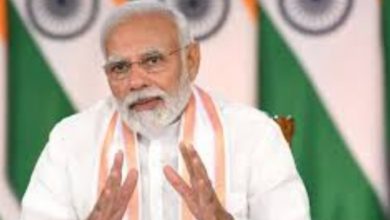Amarnath Yatra attack: 16-hour drive to base camp, one voice – they can’t keep us away

A 16-hour journey, and a convoy of 150 vehicles carrying over 3,000 people secured by CRPF, J&K Police and Army, over the hills of Jammu through the long tunnels in Pir Panjal and past the crowded towns and cities of Kashmir. The real Amarnath Yatra begins from one of the two base camps in Kashmir, with a demanding 13,000-ft climb to the cave shrine. But for the yatris, the journey into Kashmir with all its potential hazards, seems to be an integral part of the pilgrimage. And, they are gung-ho about it.
At 2 am Wednesday, their engines thrumming, the vehicles were lined up at the Jammu tourism corporation-run Yatri Niwas, all pasted with yellow security clearance stickers. Vehicles going to the Pahalgam base camp have “P” stickers on their windshields and those going to Baltal are marked “B”.
One Delhi-registered car’s audio is belting out “Very bad baby” at a volume that could reach Vaishno Devi. While they wait for the convoy to move, the all-male pilgrims in the car have stepped out to dance to the track.
Behind them, in another Delhi car, are five friends from Tilak Nagar, who say they have done this yatra every year since 2007. But it is only the second time that they are going with a convoy. “The first time was in 2007 when we didn’t know anything about the yatra. And this time, we have joined the convoy only because our family members were insistent,” says Mohit, who is driving the car.
Last year, they returned home just before the Valley erupted over militant Burhan Wani’s killing. “This time, we were initially eight. But three dropped out because of the killings two days ago,” says his friend Sunil.
The mini-bus that was attacked in Anantnag on Monday night was the first time in 17 years that the yatris were targeted by militants. The victims were on their way back to Jammu after the pilgrimage but their vehicle was not part of the secured convoy.
Even in the best of times, the security of pilgrims has been top priority for all those involved in the planning and execution of the event that lasts over a month. After Monday’s incident, this is even more so.
The first in the convoy is a police vehicle, followed by a hired Tata 407 in which a group of CRPF men is sitting close together at the back, weapons over knees, fingers over triggers. One CRPF man is standing behind an LMG positioned over the front.
Behind this, an assistant commandant of CRPF and other officers travel in a small car. As the convoy gets going, a jammer joins in, weaving its way to the front. Two or three more vehicles with armed CRPF personnel are scattered among the convoy. The tail is brought up by a police contingent whose job is to make sure no one gets left behind.
“We have always had these security elements in the convoys, now we have more of them,” says a police officer.
Along the drive up in the mountainous roads, security personnel are visible every few hundred metres. On both sides, are thick woods of trees, mostly pine. Apart from being deployed along the road, Road Opening Parties (ROP) are making sure that the path ahead is secure. The ROP’s deployment lasts only up to 5 pm. After that, it’s “area domination”.
A security personnel attached to the convoy says had the mini-bus been in the convoy on Monday, it would have been safe. “You cannot call it a lapse on our part. But we are still responsible overall for anything that happens and we are feeling terrible about the attack,” says the officer.
The police vehicle at the head of the convoy sets the pace at 30-40 km per hour. “There are vehicles of different shapes and sizes. This is the optimum speed at which all vehicles from head to tail can stay together,” says Saurabh Setia, a senior CRPF officer escorting the convoy up to Banihal where he will hand over charge to his counterparts in Kashmir.





